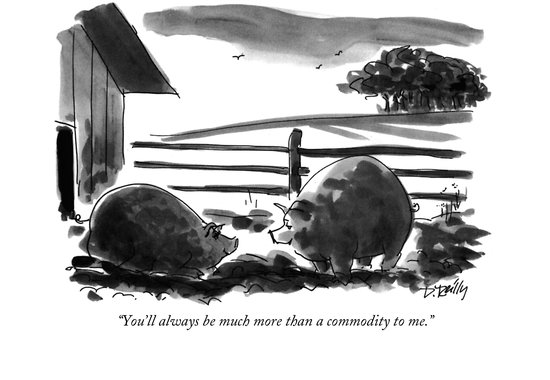Author|Michael Farmer
Source: www.mediavillage.com, July 2021
Sadly, and without intent, agencies and their clients have seen their partnerships slip away to become vendorships, with relationships bought and sold on price. These commodity relationships have benefited neither party. Clients underperform in the marketplace, and agencies have liquidated their talent through downsizings. Agencies and their clients need to escape the commodity trap they created for themselves.
Client-agency relationships did not deteriorate overnight, and the deterioration was not simply the result of decades of fee bashing by clients, which most agencies believe is the case. It took much more than this to destroy client-agency partnerships.
Changes in Industry Circumstances
1950-2000. The Golden Age of Partnerships was certainly during the period from 1950 to 2000, when the U.S. economy was growing strongly, television became the dominant media channel, consumer buying remained high and agencies were handsomely paid even though media commissions were shifting to labor-based fees. The economy grew at a high average real rate of 3.6% per year. Client marketing departments did not pretend to know how their creative agencies functioned, and they certainly did not give them much direction other than to set budgets for media spend in the limited number of media channels then available. Agencies were full partners because they had the relevant talent; they were the experts in advertising for TV, radio and print, and importantly they delivered brand growth. Their work was creative and effective, and they were rightfully proud of it.
2000-2020. In this most recent 20-year period, partnerships became vendorships. The U.S. economy’s real GDP growth rate declined to an average of 1.7% per year, less than half of the previous 50-year average, putting pressure on major advertisers’ revenue performance. Digital and social advertising came into being, fragmenting media spend and casting doubts about creative agency expertise, as creative agencies were very slow to diversify into digital and social media and TV advertising was losing its dominance within the marketing mix. The agency monopoly on “creativity” as defined by TV ads certainly became less relevant as the market shifted to e-commerce retailing, subscription-based internet streaming and digital / social scopes of work.
Advertisers continued to put pressure on agency fees, especially when client topline growth was a problem, and holding company agencies, in response to fee pressures, downsized and juniorized in order to maintain their margins.
At the same time, marketing departments significantly increased digital and social scopes of work in efforts to rekindle brand growth — they no longer looked to their agencies for this expertise. This meant that their understaffed and less experienced agency vendors were doing more and more questionable work, burning out in the process and seeking employment opportunities elsewhere.
Vendorship relationships today are characterized by low client growth rates, obsession with cost reductions / efficiencies to make up for low revenue growth, increased client investment in digital and social people (who have not at all solved the growth problem), understaffed and overworked agency junior personnel and routine changes of ad agencies through client-led reviews. In-housing has taken a fair bite out of agency assignments, and revenue-starved agencies will now take any business, however meager, to maintain their operations.
Escaping the Commodity Trap
Neither clients nor their agencies spend much time talking with one another about the topline growth stagnation that underlies their fundamental relationship problems. Clients talk instead about their desire for agency efficiency and agility, and agencies continue to flog their creativity and multi-disciplinary skills during new business pitches.
Refocusing relationships on the need to restore client topline growth is the secret to escaping the commodity trap.
- Clients need to acknowledge that they are not growing, and their significant shift of media dollars into digital and social advertising has yet to bear fruit. Their marketing departments have not solved the growth problem.
- Clients need to engage their agencies in a joint effort to identify more effective media spend and mix levels, and to design a program of creative deliverables that has the highest probability of rekindling brand growth. Clients should abandon the notion that they can make these decisions on their own and have agencies that will simply execute for them.
- Agencies need to revise their mission from “being creative” and “good service providers” to being effective in helping clients plan and achieve higher levels of topline growth.
- Agencies need to invest in the right kind of senior strategic and operational talent that can deliver an “improved performance outcome” for agency clients.
At this critical point in relationship development, the initiative for a revised dialogue should come from ad agencies.
We’ve tried to be good service providers, but this has not been effective for you or for our own operations. We would like to turn a page in our relationship and refocus on the following:
- Jointly identifying and agreeing on the reasons for the stagnation of our brands.
- Jointly designing media and creative scopes of work that have a higher probability of restoring brand growth — simplifying the work we do together and the way we carry it out.
- Working in partnership throughout the year to achieve improved brand performance and measuring the effectiveness of our efforts — adjusting as necessary as we learn from the marketplace.
Vendorship relationships have been a failure. Partnerships focused on improved brand performance have a chance if each party commits to a change in the way relationships are conceived and organized.
Photo credit: Donald Reilly, The New Yorker, The Cartoon Bank. With permission
Click the social buttons to share this story with colleagues and friends.
The opinions expressed here are the author’s views and do not necessarily represent the views of MediaVillage.com/MyersBizNet.

